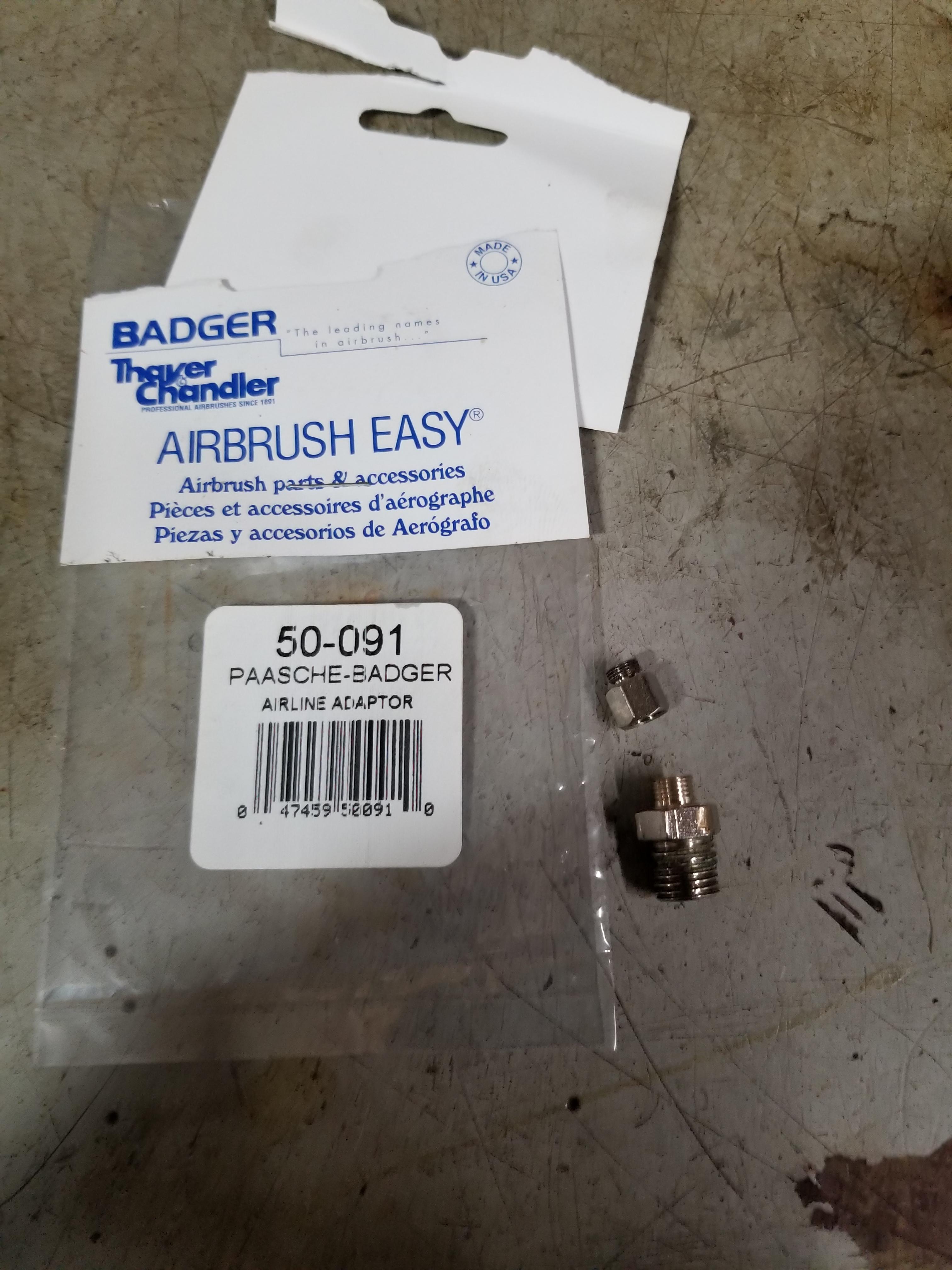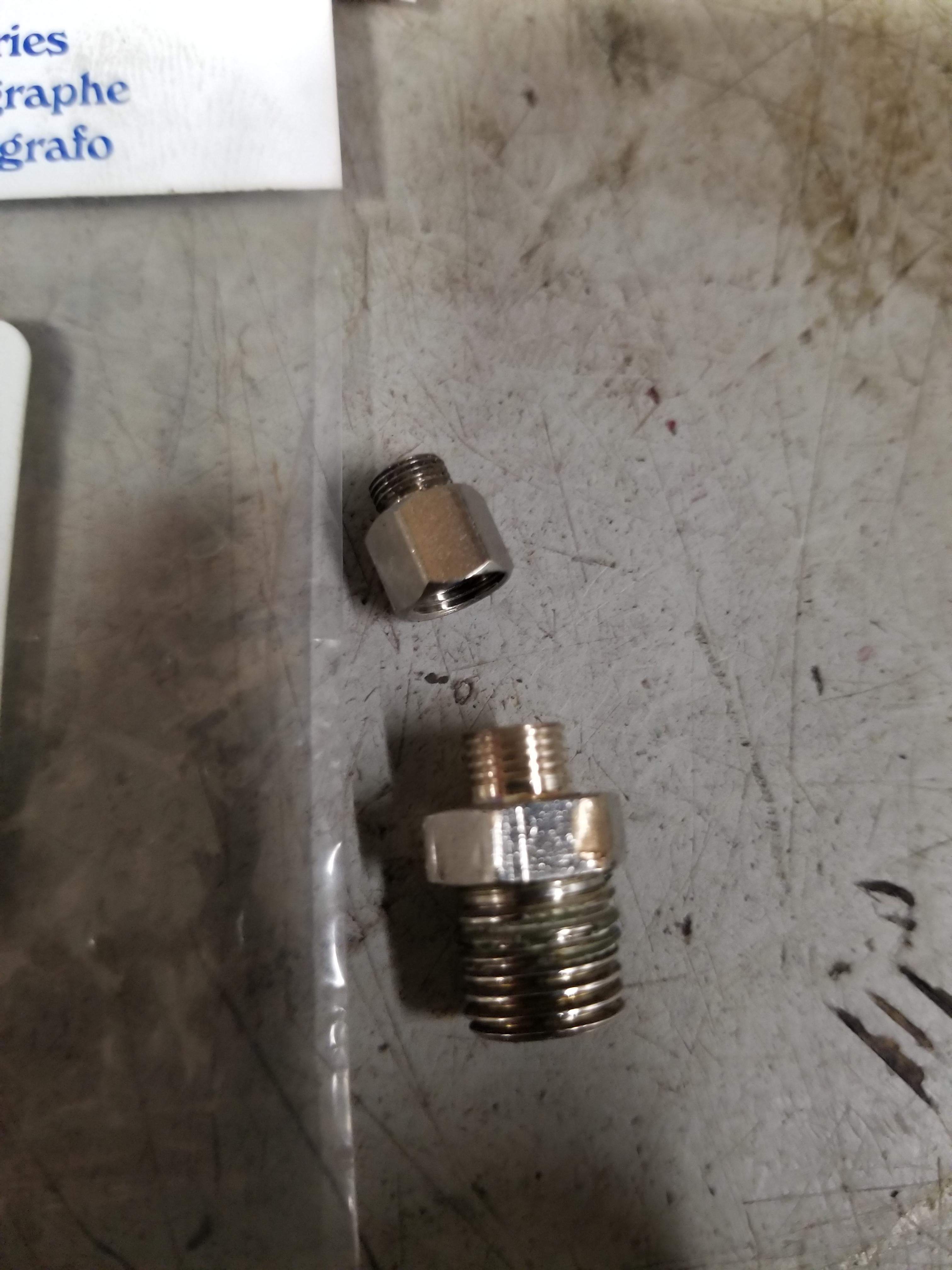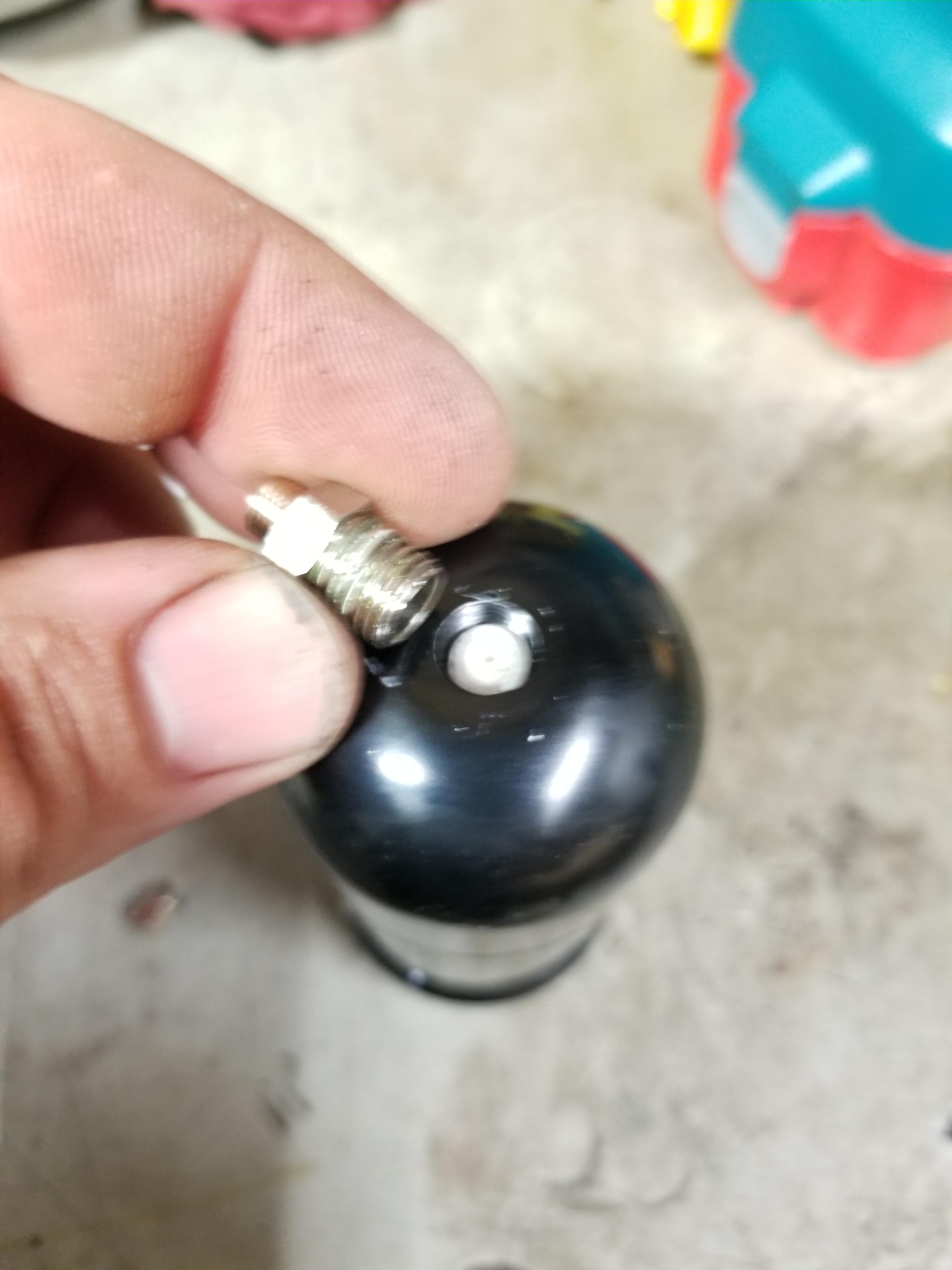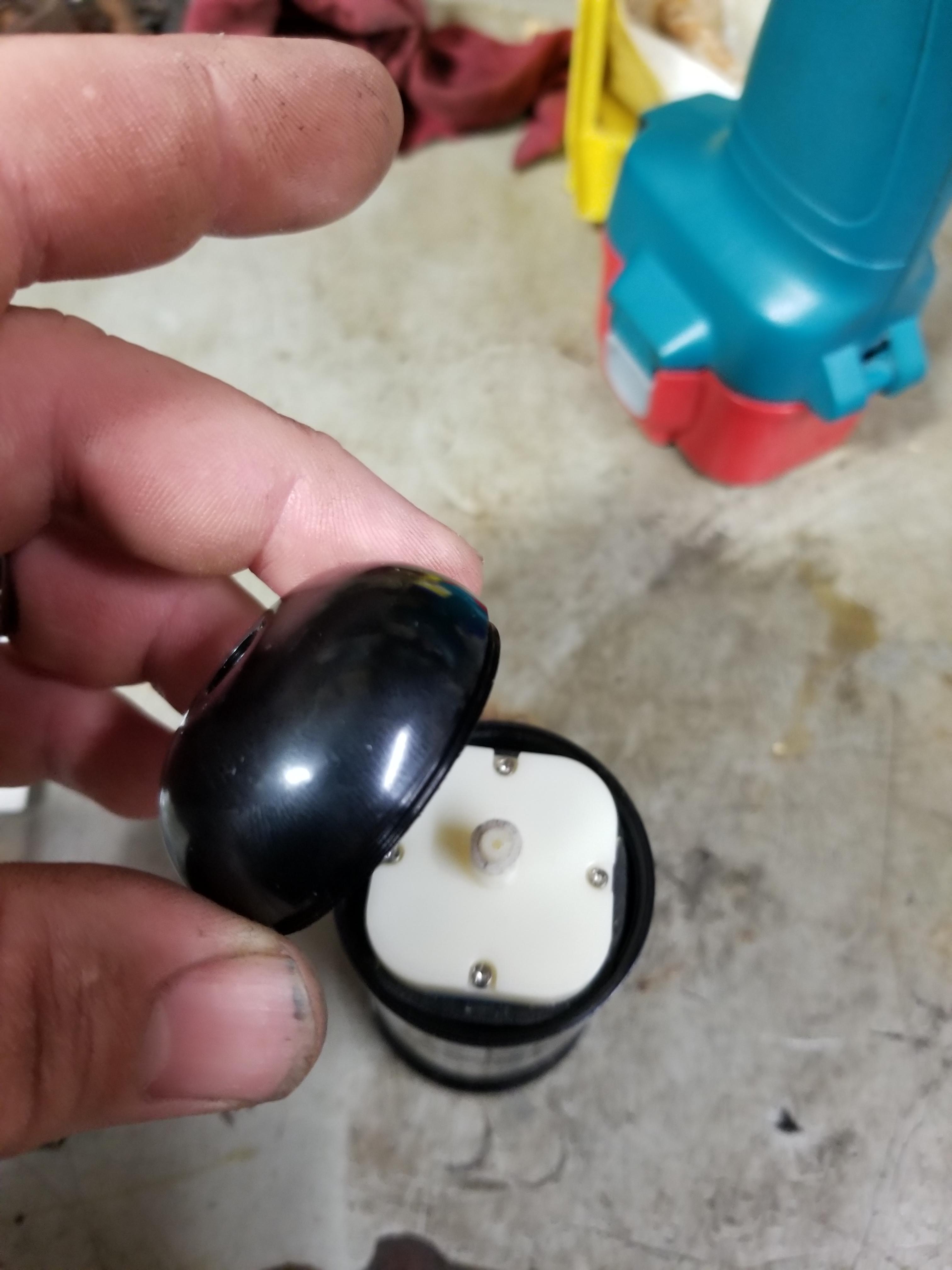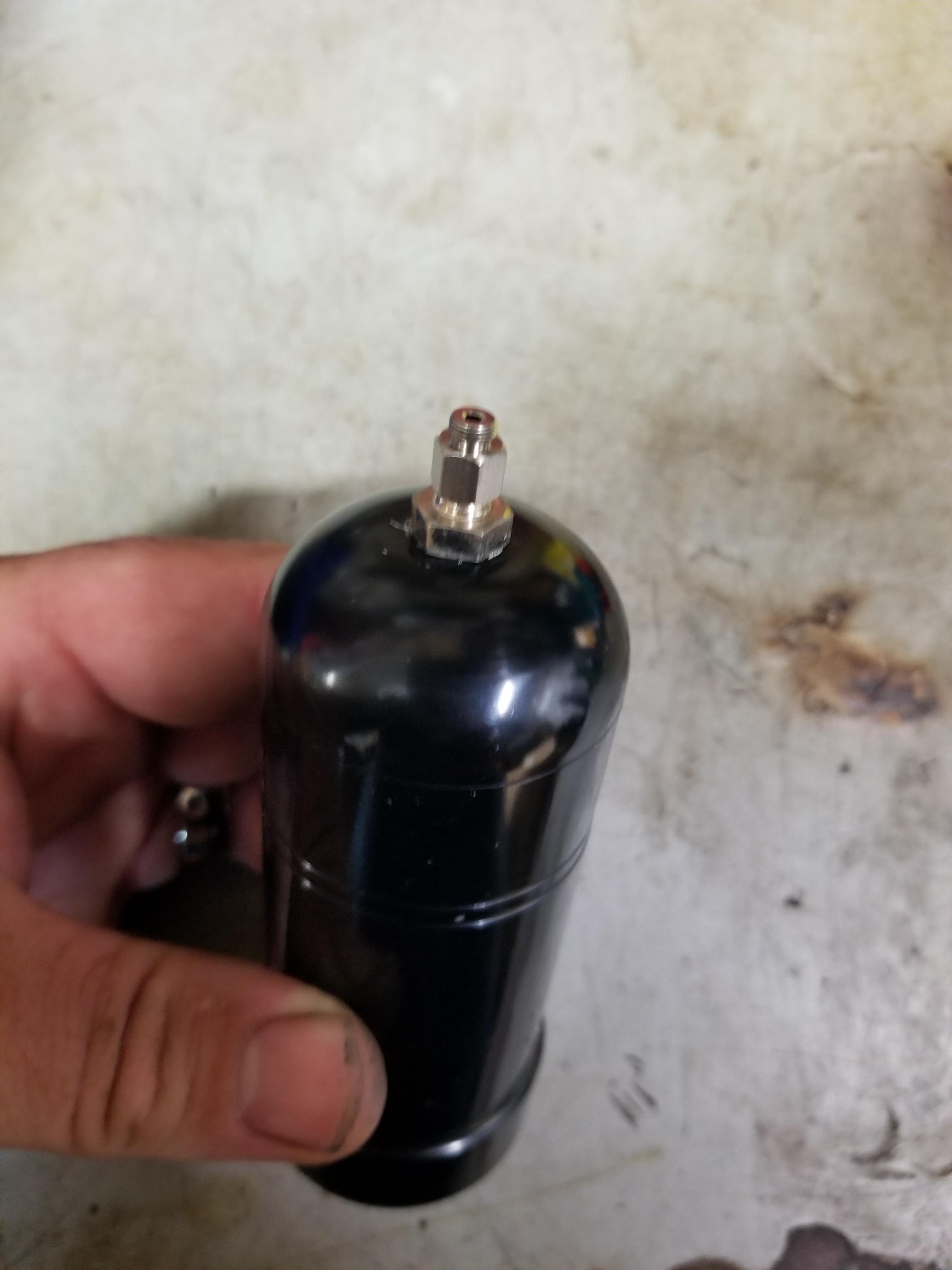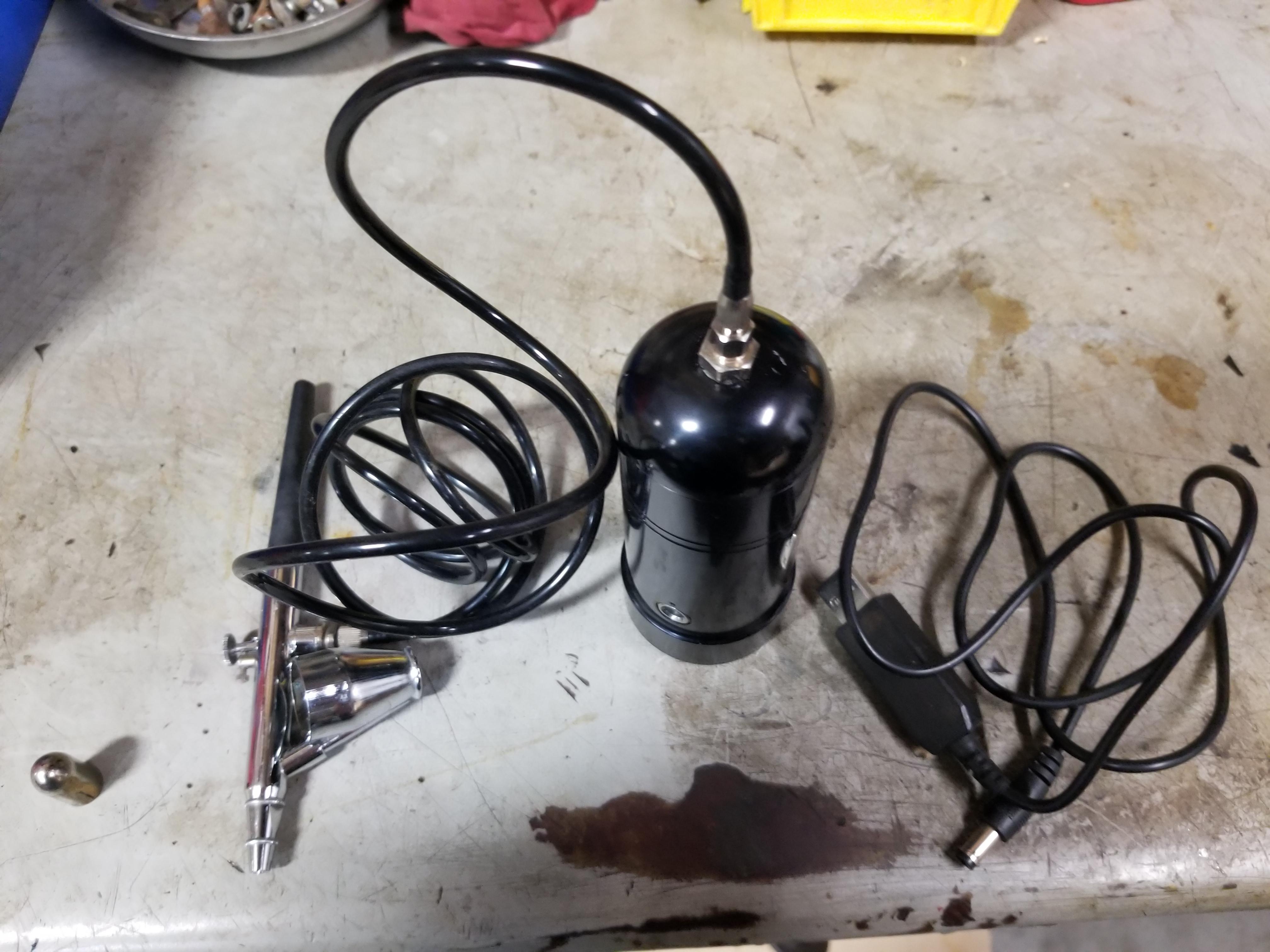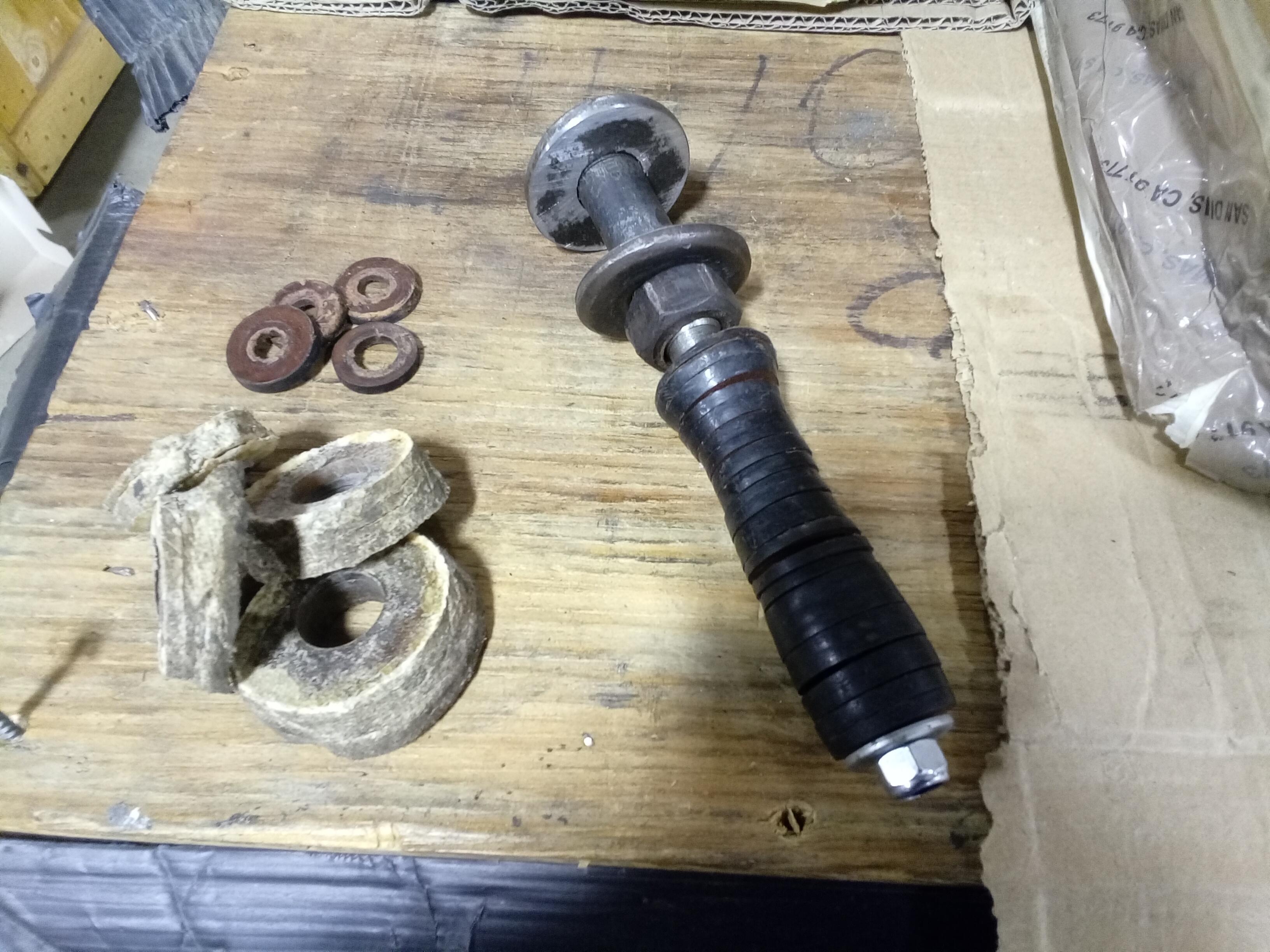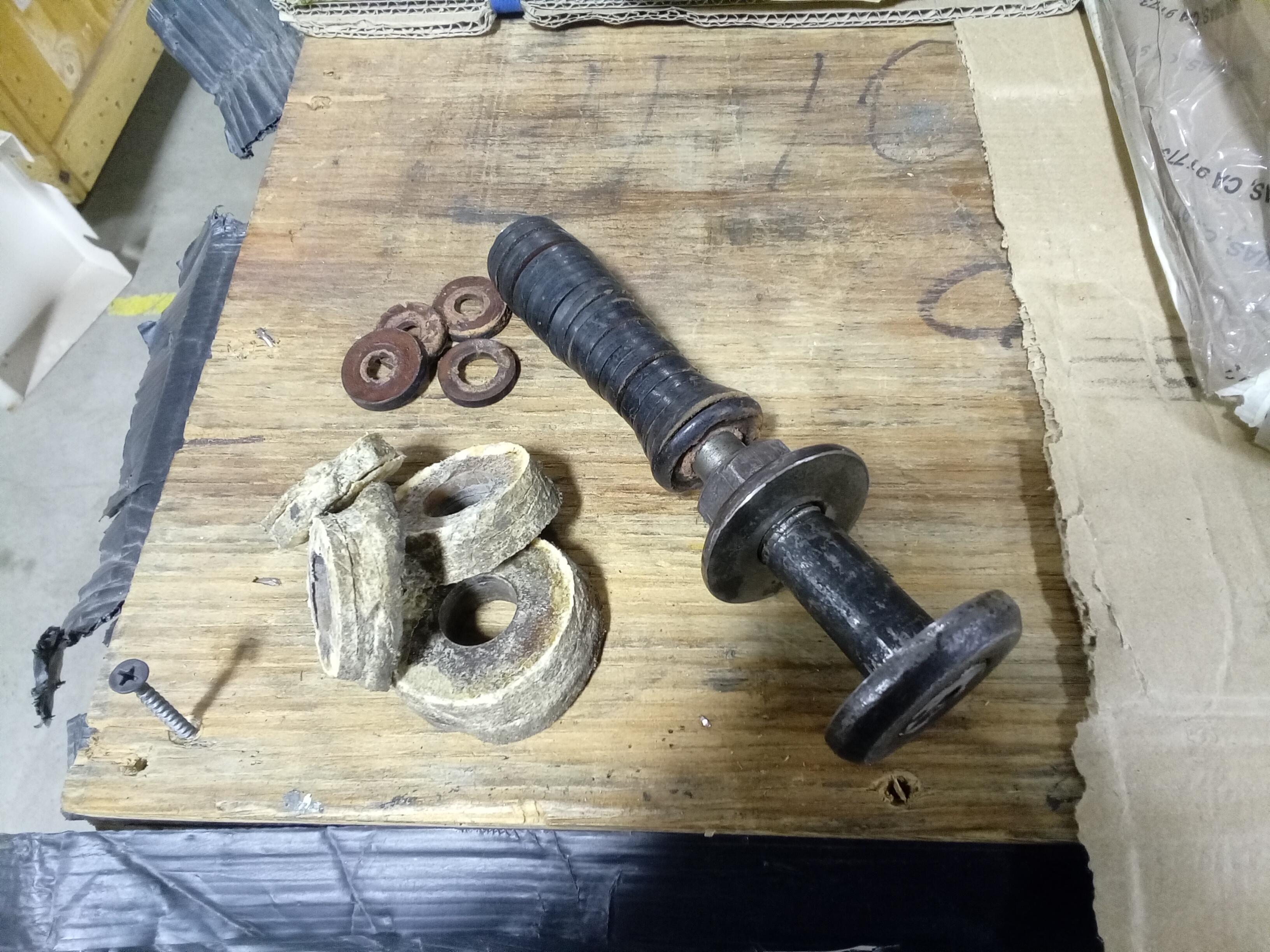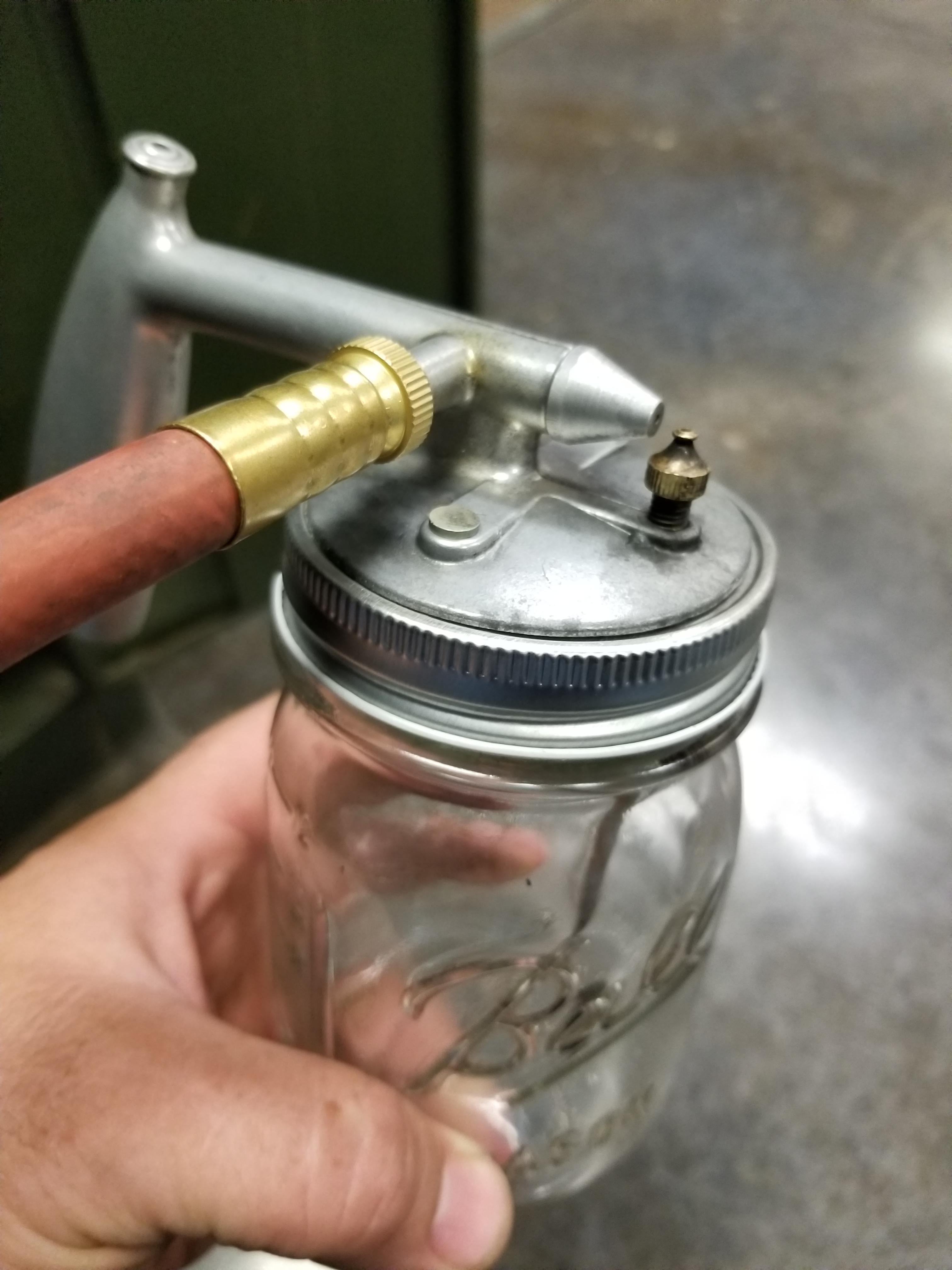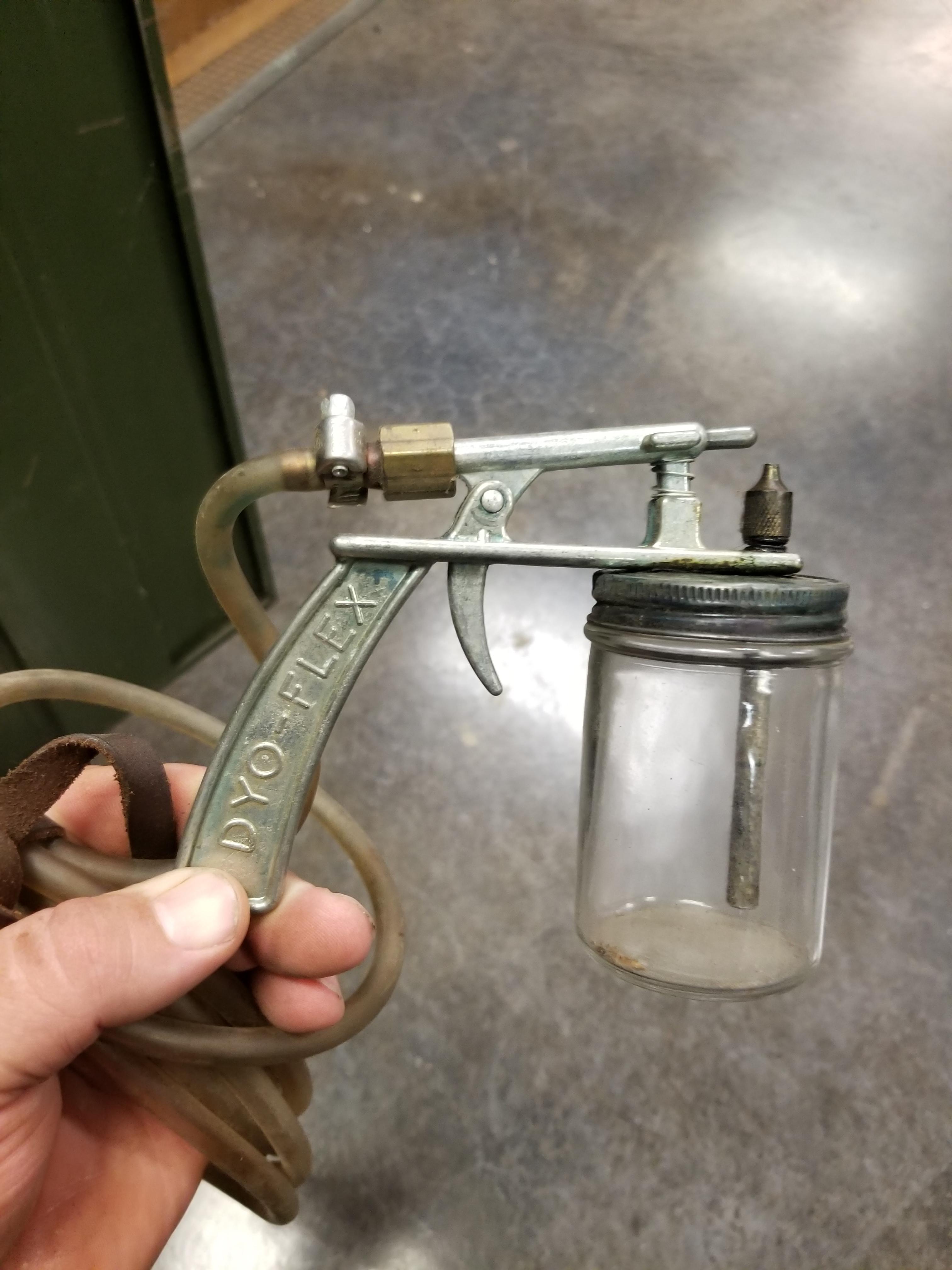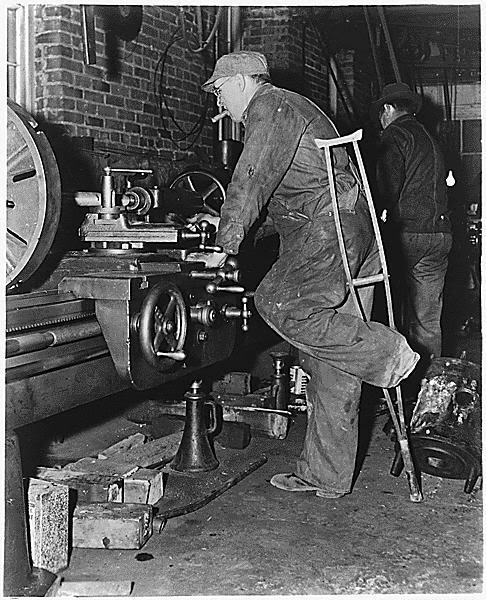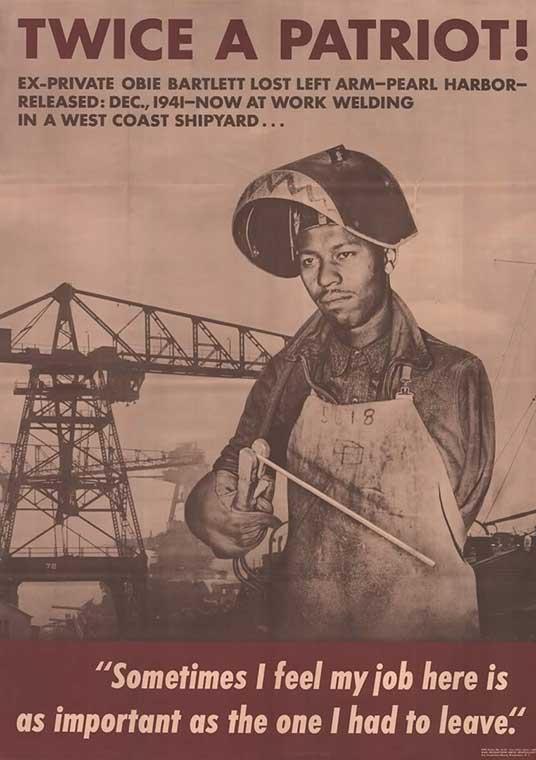-
Posts
67 -
Joined
-
Last visited
Content Type
Profiles
Forums
Events
Blogs
Gallery
Everything posted by mbnaegle
-

Landis 3 and landis 16 needles and awls.
mbnaegle replied to speedybri's topic in Leather Sewing Machines
Yep, same needle/awl system. Landis needles and awls are harder to find. If you can't find them, you can convert it to use Campbell needles and awls which have a slightly larger shank diameter. The Landis needle bar collet will flex enough to take the Campbell needle, but the awl bar would need to be taken out of the machine and have someone with a lathe ream out the hole for the awl. The size numbers between the Landis and Campbell systems are different, but in either case your thread size dictates what size needle you use, and your awl should be one size larger than the needle. -
A few generations before my time (before 1830 that is) my Naegle ancestors were wine makers. They emigrated to the US from Alberweiler Bavaria, which to my understanding is an area that's bounced around from German rule to Swiss rule and back for centuries. As far back as I've been able to go (1500's?) the Naegle's were there and made wine like the rest of the village and their fathers before them. The old village is still there and they're still making wine. I Google translated the village website a while back, and I think I remember finding a page that listed the families/vineyards in the area and there was at least one with a similar spelling of Naegle that might be a distant cousin, so one day I want to go back and look them up. Now after 1830, not long after arriving in the states my great great grandfather John ran away from home and joined the Church of Jesus Christ of Latter Day Saints (Mormons!) who teach abstinence from alcohol. At that time, they still used wine for the sacrament and grandpa John made wine for that purpose and he sold some too, but the church eventually moved on to just using water for the sacrament and John moved on to other endeavors like growing vegetables, livestock, etc. My family is still part of the LDS church and I don't have any desire to drink wine, but I like learning about the process and feel a bit of kinship to it. A couple years ago I started some vines in my back yard and have gotten into making grape jams every year. I've thought about canning grape juice too, but I still need to learn how to keep it from fermenting but still getting it to store well. Maybe next year... Around here in south Texas the Muscadine varieties do really well. They have a tougher skin so while they're not a good table grape, but they can process down into other things just fine and to my unrefined pallet they taste a bit like a concord. I've also got a couple or hybrid vines going that haven't put out much yet, but should put out red table grapes eventually.
-
I think the part # for the table plate is 202259, and the hook end on the machine is #210844. Same hinges are used on the 107W zig-zag machines. Googling those numbers pulls up a number of sources, and I think you can still get them from Superior.
-
They use the Schmetz 331LR needles, which at one point I think were discontinued, but looking online it appears some suppliers show inventory so maybe they started making them again? Landis #1 Needles Parts I highly doubt will be available, other than finding good used parts or making your own. If anyone were to have them, check with Eli Schlabach at Landis Machine Co. in Arthur, IL (217-543-3464). He's mainly in Landis #3 and Landis #16 machines, but he might have something.
-

New Tool Idea - Large Leather Shears - Should I make these for sale?
mbnaegle replied to Stagesmith's topic in Leather Tools
Good job on those old tailor's shears! I agree they are worth fixing if you can. For sure there would be a market, but I think the key will be effective communication. In just about any hand-tool driven craft or trade, there's always a big range between guys who will do everything with a plastic butter knife, and guys who think you need a million special tools, each one slightly different for slightly different demands (and some only used on Tuesdays). Both ends of the spectrum (and every point in between) has guys who feel clueless and would believe anything you tell them, and guys who will die before giving up their one true way of doing things, and honestly every one of them is "right" if they can do the work they do. I think the trick when it comes to selling any tool in that environment is to clearly explain what and why your product is and how it can help, but avoid claims of authority unless you can back it up with your own AND others experience, while also leaving room for other perspectives. You'll always have guys that think you are wrong or trying to rob them. I think good products should sell themselves and good salesmen just provide information and let you make your own decisions. For sure you need to learn from the masters before you, but the water gets muddy when that master is also trying to sell you things, no mater how helpful or necessary they are. All that said, my take is that there's no "one-tool" to do it all, but it helps having redundancy and overlap in tools. I think good craftsmen have preferred methods and methods that they turn to when necessary, AND they're always learning and looking for other ways to do things better. When cutting thick and heavy leather, shears are not the first thing I reach for, but they can be really helpful when making adjustments to things after assembly or away from the workbench, like cutting flat belting for powering machinery like they were designed for. I think I've got a pair like in the first picture and they come in handy. In this case, the tool isn't "new" but is less common. You shouldn't have to worry about promoting your design as much as bringing the proven concept to a broader market, while also toting that they are hand crafted so the level of quality can be expected to be a little higher than factory made pieces. -
Here's what I ended up with on the cordless compressor. @dikmanit sounds like your compressor is like mine. It had some kind of white thread locker material as well, but I was able to twist it loose. One mine, the top shell of the compressor unthreads, so if you need to put some heat on the fitting, you can do so without effecting the plastic parts inside. One mine, both ends of the top fitting were odd-ball, so I bought a Badger (M5) male to Paasche female adapter, as the Paasche thread was a little smaller than what was on top of the compressor fitting. I used my lathe to turn down the compressor fittings threads and re-thread them to match the Paasche adapter (about .256"x40tpi). It's not the tightest fit, but the rubber o-ring that comes with the adapter sealed it. The compressor fitting's inside diameter was a little too big to cut it all the way down to a Badger thread and avoid the adapter. It works! Time to pass it on to the kiddo.
-
Not sure if anything is available off the shelf, but bear in mind that Stimpson didn't sell hardware generically. In other words, you couldn't just buy dies and than fit them to any machine. They had different die systems for different machines, and each application had a different stroke, arm configuration, pocket mechanism, etc. 3/8" diameter hardware is more common though. At least if it was for the regular C-1 series rivet machines and for the 489 and similar series grommet machines (which were the foot and electric powered versions of that hand operated press). It wouldn't be a hard job for someone with a metal lathe to make an adapter to at least get the hardware to fit in the hole. You'll also need to consider how you'll hold your fasteners in place. Most of these machines relied on special pockets to do so which the driver would push the rivet or grommet through and they are really not meant to have the hardware swapped out frequently. You'd set it up for one job and a different machine/press for another job. Some drivers have a rubber sleeve or a magnet to help hold the fastener in place, but you'll need to consider it when choosing your hardware. Because it's a hand operated press, you only have one hand to hold the material and fastener in place as you set it. Grommets are often pre-punched, so you can set the fastener in the hole and then crimp it without any pockets, which is likely how that press was made to work, so I think it would do better sticking with grommets.
-
A couple of updates: I found a 2nd-hand handheld cordless compressor that seems to work really well and was missing the airbrush top end, but the thread on top of the compressor is some odd-ball thing that I can't find any adapters for or even information on what the thread size is (likely something proprietary), so I'm going to get crafty on the lathe and either make a fitting from scratch, or modify a couple to bridge it all together (pictures to come). I'm going to give it to my daughter to use and my intent is to make it work with the M5 Badger style hose connections, so it'll be portable, but less weight in the hand. She's mainly into drawing and painting right now. It would be cheaper and way easier to buy a complete working unit, but there is the sentiment factor that she can use one of her grandpa's old airbrush's. He had four of the Badger 150 clones and at least 3 work (I'm keeping his genuine Badger 150's with his leather tools). One or two of the clones are going to go to my nephew who's been getting into models lately. For his set-up I got a new 110v compressor as he's putting together a workbench/model station for his room. Then with the Binks Wren size "A" that I was trying to find a piece for, I got a good deal on a complete size "B" gun that looks like it's never been used. My current "B" works well, but between the two of them I'll use one for parts as they all use the same trigger/air flow pieces. The only parts that change between the sizes is the main body (stamped differently) and the fluid control assembly on the front. Now I just need to find a "C" size (heavy flow) and my flock of Wren's will be complete.
-
Nice! My dad had a 16 when he was doing saddle and harness work and really liked it. Eli's a good man.
-
DIY'ing it might be a good way to go. I found this thread *here* that has some detailed process. Doesn't seem difficult or high skill requirement. Just takes time. One thing I might do differently is those guys used nails to help hold the layers together, and in time as it wears down they'll eventually be sticking out the side. I've got a hand crank book press the should compress it together good enough that the nails aren't necessary.
-
-
I've got several rawhide mauls an various sizes, and one of the little ones was worn down considerably so my Dad took apart to rebuild before he passed and I'd like to get it finished. I don't think it's an Osborne, as it has a handle made of stacked leather rings and the end cap washer was rivetted in place. Given the wear and beating it had, I went ahead and threaded the end to take a nut so it'll be easier to service in the future. I'm having some trouble finding the right rawhide refill for it though. The refill should have a 3/4" ID hole, and be about 1 1/2" or 1 5/8" tall. Diameter could be anything over 2". I think at one point the plan was to make a plastic head for it, but rawhide just seems a better choice, or hardwood if it gets down to it. Plastic works great for stuff, but I'd rather keep the old tools going as they were intended and make a whole new maul if I wanted a plastic one. Looking at Osborne's site, I don't see all the dimensions listed. It looks like the 393-2 would fit, being 1 5/8" long and 2 3/4" round, but there's no hole dimension listed. Can anyone confirm if it's 3/4"? We have a few refills on the shelf but they're all bigger and I'd prefer to avoid adding bushings and keep this maul appropriately sized. I know I could just call Osborne too, but I'm also wondering if there are other rawhide suppliers out there as I have an unhealthy tendency of fixing up obsolete tools and utilizing dated materials.
-

Sewing machine for true moccasin footwear
mbnaegle replied to X24's topic in Leather Sewing Machines
Not sure if this is what you are after as I have I've no experience in shoe or moccasin making, BUT something maybe of interest is that in the 1950's there was an Indian moccasin fad big enough that the American Stay Co. (later sold to Randall) developed a moccasin seam sewing attachment for the Union Lockstitch machine (Needle and Awl Harness stitcher). To mount it, the machine's face plate and the awl bar had to have some extra features machined into them, but most every machine made from the 1950's to the 1990's had those features ready to use. Essentially what this attachment does is replaces the up-down pressure foot motion with a left right pressure, pushing the material into the channel of a special needle plate. The pressure bar (LS-801) could be inserted into the shoe, allowing the moccasin's upper seam to be sewn. We haven't sold parts for these in decades, but still have it all on the shelf and It's been on my to-do list to set up a machine with one and try it out. -
Might depend on what kind of air-brush you were using, but more so what you are doing. There are lots of different kinds that work different ways. Some take more skill and provide better detail control, while others are simpler. For basic painting where I'm not getting too "artistic", I'm a fan of the Binks Wren airbrushes (expensive new, but cheap used), though that general design concept is offered by other makes as well. It's a externally mixing gun, meaning it's like an air gun with a tube in front of the nozzles that siphons paint up out of the pot, making for easier cleanup. It's also a single action button, where pressing the button only activates the air. Other airbrushes out there like my Badger 150's are double-action, where pressing the button activates the air, but pulling back on the button gauges how much air is coming out, which can be tricky to get the hang of. All of mine are syphon feed that need air to pull the paint/dye up a tube, while others are side or top gravity feed. I think a spray bottle would be hard to gage when to start and when to stop pumping, how to fade it, etc. but I've never tried using one for paint or dye. I think they would be hard to clean, so it ends up being a disposable. Air-powered spray guns have the advantage of providing consistent pressure for as long as you hold the button or trigger. If you're looking for simplicity and need to do volume, these old dye sprayers are about as simple as they come. Not sure where to buy them these days, but it gives you some ideas. This one I recently restored, (full of dry dye and the lid was rusted out). No moving parts and minimal cleaning needed. It uses very little air pressure, which bleeds out a hole in the top of the handle. When you cover that hole with you're thumb, it redirects the air to spray out the front. Not sure who made it originally. Also have a couple of these old Dyo-Flex guns. The air is always spraying out the front and the trigger moves it closer or farer from the syphon nozzle, changing if or how much fluid is spraying.
-
Had some mishaps over the years, always due to being an idiot with a tool or using it without the proper guards. Personally, I don't like trying to make machine's "idiot proof" as it seems that they keep coming up with better idiots, but if something had a guard when it was new, it's better to keep it in place and adjust your job rather than take it off and forget about it. Ultimately, no guard will compensate for someone not keeping their mind on their work or trying to do it faster than is safe. It's better to treat the machine like it would kill you if it could, like a tiger on a chain, not a kitten to play with. I was cutting up some 3x3x3 hardwood blocks a few years back and didn't plan ahead and cut them to length before I sized the height/width on the jointer or planer. Being in a hurry, I made the idiot decision to run the short blocks through the table saw. One bound up and kicked back into my face, making a comical *ploink* noise and I later found it had a dent in the side where it hit the floor AFTER hitting me. It momentarily dislocated my jaw, knocked my safety glasses off my face, vision went blurry for a bit, and I was bleeding pretty good. Got a ride to the hospital and was EXTREAMLY LUCKY that it just skipped off my face doing no bone damage, no bruising, and I only needed 14 stitches and some superglue to get put back together. Also fortunate that the ER guy on duty that day specialized in facial sutures, and he dug some wood shrapnel out of my face. Got a neat scar out of the deal, but better than that I gained more respect for using a table saw correctly and I replaced the missing blade guard. I finished the blocks later (belt sander), which were being cut into some support rests for a tool, and the one with the buzz mark across the side where the blade caught It I kept visible for a personal reminder. Speaking of table saws, long before my time my dad worked with a leather shop that did silver work as well. He was doing some silver work on a mechanical die press and it took the last 1/4" off of one thumb. He went to the hospital but didn't bring the severed bit, so they had to pull the bottom edge of the wound up under the nail (which he said hurt the most). For the longest time, he had one thumb shorter than the other, which made for some fun stories, until one day he cut 1/4" off of the OTHER thumb while using a table saw. This time the doctors didn't want the bit and stitched it up like they had the other thumb, so for many years he kept the severed bit in his desk in a little jar of formaldehyde. He used to say when he was buried he wanted us to burry ALL of him, but when he passed we couldn't find it (I miss him anyway and don't mind if he wants to haunt me). Speaking of thumb's, another time I was making adjustments to a band knife splitter, which required the machine to be opened up but running so I can see how it was moving and make adjustments. While I was sitting and giving it a moment to run, I noticed one of the blade wipers was vibrating. I thought that it was covering the blade and I stuck my thumb on it to see if the vibration would stop, and when I did it slid back letting the blade slice into my thumb about 1/2". The guy I was with wanted to call 911 but after I had a chance sit and to breath through the wooziness, it didn't seem so bad once I taped it up, so I finished my work for the day and went home. When I got there my visiting father-in-law helped me re-dress it and told me 'Nope. You're going to the hospital.' Once there, the nurse messed around with it cleaning it out and by-golly that was x10 worse than when it happened. They recommended stitches but too much time had passed (6 hours), so they would have to cut it back open If I wanted it to leave less of a scar. I was more concerned with infection than cosmetics and they confirmed that I didn't NEED stitches, so they taped it up and gave me some antibiotics. As it healed, I realized I had cut through a nerve as the end of my thumb had lost feeling, but it closed up fine and didn't hurt. After 3 or so years I've got about 90% feeling in the end again. I've gotten nicked by non-moving band knives plenty of times over the years, but I still cringe when I think of getting my fingers that close to a moving blade again.
-
Yep, gotta make sure the machine is off and the motor is wound down (if it's the old clutch motors) or the power is bled out (if it's the newer servo motors). The old motors need time for the momentum of the motor to wind down, while the servo motors have some electricity stored in capacitors that needs to bleed off. My dad used to tell the story that not long after he and my mom got together (they met and worked together doing leatherwork) he was sewing on one of his old Landis 3 needle-and-awl stitchers, which have an awl punching from the top and a hook tipped needle coming up from the bottom. He always used his thumbs for edge guides as he sewed and did so safely for years, until one day he got a little too close and the awl came down into the nail of his right thumb. He stopped right away and said it wasn't too bad, but he couldn't reach the handwheel with his left had to back it up. He knew if he kept going, the awl would come out but immediately followed by the needle which would really tear up his thumb when it came out. He called for my mom to come help, but as soon as she saw it she got scared and ran off. She came back a couple times and kept running off saying "Oh my gosh! Oh my gosh! Oh my gosh!" until finally my dad had to raise his voice and holler "STOP!!!....... Ok..... I'm going to step on the pedal a little bit to take the brake off of the motor, and you're going to turn the wheel BACKWARDS slowly...." Which she did, he pulled his thumb out, sucked the drop of blood off of the nail, and finished sewing the tack or harness he was doing. He still used his thumbs as edge guides too, as do I, and Mom quickly got better acquainted with the "blood and gore" associated with working in a shop too. Having level-headed help with you is a major necessity. Over the years, we've had lots of people try or ask us to make sewing machine more OSHA friendly to operators, adding barriers and switches and everything to keep hands out of the danger zone, and in almost every case the safety measures significantly reduces it's utility and increases spoiled work, if not making it just impossible to use. It's just one of those things that takes some training and respect for the machine and the task at hand. It's like trying to make a bicycle impossible to crash. On the plus side, the new servo motors shut down a lot quicker than the old clutch motors, but you still need to tap the pedal or watch the LED light dim away until the power is all the way out.
-

Randall leather sewing machine needs a shuttle
mbnaegle replied to Vicki Vallencourt's topic in Leather Sewing Machines
That's pretty cool! I'd agree I think it was an owner maybe marking when he got it. It's kinda neat to see all the history worn into old machines With the Nylon thread, I've known some guys that can get it to work on Campbells and Unions and hat's off to them, but it's uncommon. I think the quality and age/condition of the thread has a lot to do with users success, but whatever you use If it works it works. -

Randall leather sewing machine needs a shuttle
mbnaegle replied to Vicki Vallencourt's topic in Leather Sewing Machines
All good notes. Needles and Awls are still available for the Campbell/Randall lockstitch and Union lockstitch machines in the more popular sizes. There are a couple less popular sizes that we haven't replenished stock yet since needle manufacturers often have minimum orders of 10,000+ pieces, so we have to budget when we're going to stock-up for the next 100 years. In those cases, if someone needs something there's always a half size over or under in stock that can do the job. You're right about the awls too. Needles are sized by the thread you are using (the manuals have charts telling you which to use), and your awl needs to be one size over to account for the hole it punches closing up a little bit (some materials may even require an even larger awl). If you wanted to sew with a 277 thread on a Campbell for example, you would want a CHS #1 1/2 Needle and a CHS #2 1/2 Awl. The needle systems and sizes are different for every machine and the size numbers don't correlate to any measurable dimension. Union Lock needles and awls only work on Unions, but CHS Needles and Awls can be used on other lockstitch machines with some modifications. The needles will work in Landis 3's and 16's, while the awls require the awl bar hole to be reamed out (slightly larger shank). I believe the same is true for Champions, and you may need to grind 1/16" off the back of the needle. I believe they'll work in American Straight Needle machines without modifications. -

Randall leather sewing machine needs a shuttle
mbnaegle replied to Vicki Vallencourt's topic in Leather Sewing Machines
@bruce johnson @kgg @Vicki Vallencourt Thanks for the kind words guys. I enjoy curating the history of our companies and have bene planning on starting a thread or two about it (when I find that "round-to-it"). @Wizcrafts Thanks for the testimonial! I guess my "neutral" side is more that I'm a believer in investing in quality "classic" tools and machinery, and I think needle and awl lockstitch machines are the best at sewing medium to heavy weight leathers (compared to other modern rotary hook closed eye needle machines on the market), but some might take that as I'm just trying to sell machines since ours (the Campbells, Randalls, and Union Locks) are the only manufacturer supported needle and awl stitchers left. New machines are not cheap though (about $8000 these days), and we typically have a long waiting list for them, so whatever you can use to get your product made is a win. I'm happy to see any used machines out there get put to work as it keeps the machines reputation rolling. I do plan on doing some more technical threads and videos, especially on the Campbells and Unions. I tell people often that there's a reason these machines were designed with a tool tray on the front. You've got to be comfortable and familiar enough fine tuning them every now and then same as any other sewing machine, but all the guys I know that get over that hurtle love the machines in the end. For example with the Union Lock, which has a very polarized reputation for needing periodic adjustment, it has ABUNDANT points of adjustment that can slip out of time, but once you understand how to put it all in place and keep it there, that machine will run forever because as things wear you can keep tightening them up. Campbells and Randalls can and do get run into the ground, needing extensive repairs and parts replaced eventually, but we haven't had one yet that we couldn't save. Those cases are rare though. We have one Campbell on display in our lobby that was on lease for 70 years needing no major repairs or rebuilds and it still sews great. They're not difficult to operate either. True, I grew up around them, but my first time running one was when I was around 10 or so at a trade show with 5-10 minutes of instruction from my dad, and It was a blast. Campbell's, Randall's and Landis #3's are what I consider 2nd generation needle and awl machines. The first generation machines being Landis #1's and similar early low speed machines (better than hand stitching, but long since outdated), and 3rd generation machines being high speed Union Locks, Landis 16's and Cyclones. In my opinion, that 2nd Generation really got things right. They relied on cams and levers and oscillating shuttles (mostly) in their designs and are mechanically very durable and well built. They operate comfortably at a decent pace that operators can keep up with without having the work get away from you. The 3rd gen machines could go faster, but it's like driving a car where just because the car can do 200mph, doesn't always mean the driver or the road are up to it. They also often have more complicated parts making them more expensive to produce, which is a big part of why our Cyclone had so few machines made. The needle and awl design is what really makes these machines unique though. That action of punching and threading the hole, going back and forth from either side, with the needle or awl feeding the work, mimics hand stitching and produces very little puckering on the back of the work when compared to a closed eye needle machine. That process also enables some unique abilities like corner stitching. Like Wizcrafts noted too, the Campbell/Randall machine has an automatically adjusting looper that will keep a uniform stitch when sewing up and down inclines, while other machine need tension adjustments when thickness's change. So yes, I'm biased, but I'm also the kind of salesman that I don't want to "convince" anyone of anything. Good products should sell themselves and it's the companies job to support it best as possible. The cost of building these machines is one thing we couldn't fudge if we wanted though, and we learned a long time ago that we'll never be able to compete with imported machines in that regard. Fortunately, there's been enough like minded clients out there who want to invest in a premium machine that will outlive them, so we keep kicking the 140 year old tech around . -

Randall leather sewing machine needs a shuttle
mbnaegle replied to Vicki Vallencourt's topic in Leather Sewing Machines
Yep, they're still fully supported. I try to keep things neutral on here as I don't want anyone to think I'm just one here trying to sell machinery or promote our company, but shoot an email over to service@campbell-randall.com and we can get you a PDF of the manual, and a quote for the shuttle and bobbins. We don't have complete records for the Randall Lockstitch machines, but can tell you that they were made new between around 1910 and the 1940's or 1950's. I've only ever seen serial numbers up to the early #2000's, so I'd estimate your machine was from the 1920's or maybe the 1930's, and the black 'new-york' tag means it was factory rebuilt sometime between the 1960's and the early 1980's. Campbell first developed their machine in 1882, but only wanted to lease machines. for 120 years the routine was that you would lease a machine from them, then send it back when you were done after 10-20 years, they would re-manufacture it, and ship it back out to a new client. Randall was established as a harness machinery maker and Campbell approached them to make Campbell parts and machines for Campbell to sell. Randall said "SURE! Just get us copies of all the prints," which Campbell did, and within a year or so Randall had ripped them off and made their own version of the Campbell with just enough changes to get around the patents. Campbell couldn't have been too happy about it, but it was good for the market because Randall only sold machines. So now people had options in that you could lease a Campbell, or own a Randall (also note that Landis also touted the "own your own" idea with their machinery). Both companies did very well in the coming decades with lots of diversification, until the late 50's and early 60's when the big corporations they had become part of were restructuring, and Campbell Bosworth Machinery split off from United Shoe Machinery, and the Randall Company was split up with the original leather machinery side being sold to a family in New York. who also bought Campbell Bosworth. So the competitors ended up under the same roof, but still marketed as different companies, until the mid 80's when they had a family spat and split into two different companies again. Then in 2006, we put them back together here in Texas, but were fully merged into one company. The lease program ended in 2000 and we've only been selling machines since. When we run out of the old lease machines to remanufacture, we'll have to start casting the frames again. Campbell is the primary machine we build, being the "original," but we still fully support the Randall's. In the manual, there's a page of the Randall parts that do not interchange with the Campbell. We still sell both versions of these parts and we would just need to know that your machine is a Randall and not a Campbell. Otherwise Campbell is the default. They're great machines. Keep your RPM's under 300 (most users are much happier running around 100rpm or less) and keep it well oiled. There's not a ton of adjustments on them, but the manual gives a good understanding of it. These machines also don't like Nylon. Polyester or natural fiber threads are best as you want something that lays flat and doesn't retain a coil or stretch. They're designed for sewing leather, while most other stitchers are designed to sew all textiles. You can't sew fabrics, webbing, or other woven textiles, but they'll make beautiful durable stitches in leather and can work with many synthetics too. -
This is why you have kids! Put them to work! You might look at amputee prosthetics, as I've seen some ingenious stuff done to keep guys busy. Most of it doesn't restore full use of the arm, but rather makes it easier to use the arm for simple stuff. If your arm is in a cast, you might be able to fashion a hook, ring, or spring clamp to help hold stuff while you work on it with the other arm. Don't let life get you down. Where there's a will there's a way. Double Arm Amputee Welding
-

New sewing machine! probably too much for what I need.
mbnaegle replied to gordonl's topic in Leather Sewing Machines
I'm in agreement that if you are not sewing heavy materials, it will be better to sell this machine to someone who needs it and buy something better suited to your needs. I remember working on a couple of very similar Highlead machines (Normally we don't work in import machines like Highlead, but these ones were unique). I think they were model GA2698 like the attached video, but they are built on the same deep throat cylinder arm frame as the machine above. Those machines however are configured for "up-the-arm" stitching, where instead of stitching front to back, your material went left to right. A company was setting up to use it to make leather archery quivers so each piece had 24" of stitching and then was pulled off the arm. I guess my point is a big arm like these machines have has a purpose, and it can be a pain to deal with if you are not using it. Youtube video A machine like yours is way more versatile being in the same family as a Juki 441, Adler 205, etc. which are useful to someone doing saddle and harness type work. The deep arm would be unusual, as the only application for deep throat machines I'm aware of in that industry is sewing saddle blankets, which is usually done on a flat-bed machine. If someone was trying to add leather reinforcements to custom saddle blankets and sew them roughly in the shape they would be on the horse (not flat) this machine might be just the ticket. It could also be useful in making heavy webbing slings for rigging and helicopter rescue. If setting this machine up to use, the ones we worked on were on tables that were very similar to used for Juki 441 with the same motor and reducer, but the base was much longer and more substantial (like in the video). Essentially a heavy duty pedestal stand for a big cylinder arm machine, but with an even heavier duty and wider base. With all that length and weight hanging out there, the last thing you want is for this thing to end up on the floor, so I would either invest in the proper stand, or get crafty with the welder and fab something that is going to allow the operator to fully utilize the machine, while also fully supporting it. It might also be an opportunity to incorporate a removable flat bed extension. Something like a big sheet of reinforced plywood that fits around the arm for typical work, but could be removed when you want to use the arm. -
We'll call those "Hinges" most of the time. On the plus side, that style only comes in ones size that I'm aware of, so if you find some that is the right shape then they should fit. There are other shapes out there as many manufacturers came up with their own design, but that one is pretty common. Depending on who you get it from, some will come with the metal part that fits into the hole in the back of the head, and some they are sold separately. The metal part you have is one someone made, as the original is made from flat steel rolled into shape and Nickle plated.
-
I think the Campbell one might interchange, if you change out the holder for it. I think it was all one "L" shaped piece on Randall's and Landis 3's, but the new 2 piece Campbell style interchanges with the Randall at least, and it gives a little more adjustment to get the eye just where you want it. CHS-602 for the thread eye which is straight with a little bend on the eye end and is .124" diameter. And CHS-593A for the holder which is .186 diameter on the vertical end, if you want to check it.
-
I think the comments above have it. Even if the motor is not using a needle positioner encoder, if the linkage for the pedal is misadjusted the motor is likely getting a signal immediately at start-up that it can't use or doesn't know what to do with. This would make sense if it started doing this after transporting the machine, as it's common for linkages and legs to shift such that the Idle pedals position is different than what it was previously.



